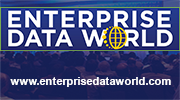 Metaphors are useful cognitive tools to help understand complex ideas and relationships. At the Enterprise Data World 2015 Conference, Mona Pomraning, spoke of the differences between Data Governance and Data Management, as well as the relationship between the two. In her presentation titled “Data Governance and Data Management: Together Like a Horse and a Carriage,” Mona described the relationship between the two metaphorically. She designated Data Management as the horse and Data Governance as the carriage which guides the horse.
Metaphors are useful cognitive tools to help understand complex ideas and relationships. At the Enterprise Data World 2015 Conference, Mona Pomraning, spoke of the differences between Data Governance and Data Management, as well as the relationship between the two. In her presentation titled “Data Governance and Data Management: Together Like a Horse and a Carriage,” Mona described the relationship between the two metaphorically. She designated Data Management as the horse and Data Governance as the carriage which guides the horse.
While describing the journey that many companies take using Data Governance, Mona remarked:
“The Data Governance journey can take many twists and turns in the road. Of course everyone wants a successful, fun, productive, value-added, sustainable carriage journey. And sometimes the journey’s successful, but other times not so much. Whilst there are many reasons why carriage-driven journeys don’t go as planned, by far the most common reason is a combination of an immature horse, selecting the wrong carriage, and ignoring the carriage-driving leading practices.”
Mona is suggesting that the most common reason that a business fails is due to inexperienced employees, a poorly established business plan, or assuming that the other two are not at fault, a poor execution of the business plan.
Mona Pomraning has been in the Data Management field for thirty-five years. She spent thirty of those years in the industry and the other five years working within two different consulting companies. She has worked for Boeing, Martin Marietta, Micron Electronics, Les Schwab, BP, and Accenture.
While working at Boeing, she was involved with Data Management practices regarding the Boeing 777 airplane, which was the first airplane to be designed entirely with computers. Also while at Boeing, she chaired the Data Resource Management Board.
In other words, she is a highly experienced data expert and many “data troubled” companies could take a page from her book.
In her presentation, Mona used the horse and carriage analogy in order to make the differences between Data Management and Data Governance easier to understand, as well as accurately illustrate the relationship between them.
“If you actually have a good plan, that’s half the battle. The other half of the battle is following that plan,” she said.
Mona pointed out that the majority of that battle is making sure that Data Management is in good hands. After all, a carriage (Data Governance), cannot be used without its horse (Data Management).
“If you want to use Data Governance, you are going to need to change [Data] Management to do that,” she commented.
If some aspect within the Data Management goes wrong, such as a lack of adherence to the company’s policies, a poor execution of the established plan, or a poorly developed plan in the first place, continuing would be foolish. For example, Mona stated, if your horse started to misbehave, you wouldn’t just push on, you would stop, you would look at your checklist (help the horse) and make sure that you correct the problem, and then, and only then, would you press on.
“I get all the projects that are in trouble,” Mona mused. “It’s really all about things not coming together.”
That is why Mona decided to create the horse and carriage analogy. It was a fitting analogy to make, given the fact that she raised and trained horses. The horse and carriage analogy makes it easier to break the elements of Data Management and Data Governance down to companies and individuals who did not understand the concepts very well.
Mona described these key similarities between the horse, the carriage, and data:
- Data Management = The Horse: The horse pulls the carriage, much like Data Management provides the structure for Data Governance to take place.
- Data Governance = The Carriage: The carriage contains the cart, the wheels, etc, which is very much like the policies that governing bodies use to keep Data Management (the horse) on track.
- DAMA = The Carriage Driver: DAMA (Data Management Association) is the international association for data and information professionals. It is the carriage driver because it provides both adherence direction and standards.
- The DMBOK = The Driver’s Manual: For data professional’s, their “driver’s manual” is the DMBOK (Data Management Book of Knowledge), one of the primary handbooks for data professionals.
- The ICCP = The Carriage Association: Just like professional carriage drivers need to get certified by the carriage association, in order to assure that a company’s data professionals are of suitable quality, a company should make sure their employees are certified by the ICCP (Institute for Computing Professionals).
Mona stressed the need for companies to certify their data employees by comparing them to horseback riders that may not know what they are doing.
“Now the thing is, if you don’t know what you’re doing, you’ll have an accident,” she said.
In Data Management, most things that go wrong fit into one of three categories:
- The company hired the wrong people
- There is something wrong with the company’s Data Management processes
- The company is utilizing the wrong types of technology
Every problem has a solution, but not every solution is immediate. In her presentation, Mona described the various ways that a company can lessen, or mitigate, the effects of these problems.
One way to eliminate hiring the wrong people (or keeping the wrong people) is to make sure that the company certifies its entire data-related staff.
In order to eliminate faulty processes, they could create a company standard for said processes.
A way to diminish both faulty employees as well as faulty processes is for other employees, or the business itself, to “lead” new personnel and show them the correct way to do things. This also lessens the learning time and quickens their process towards being a standardized, well-trained employee.
Other resources that one can use to mitigate their company’s problems is to use DAMA, DMBOK, and the ICCP to their advantage.
Mona went on to state that Data Governance is at the center of Data Management. Data Management constitutes Data Governance, but a governing body is needed to make sure that the policies are followed and the processes are not a detriment to the company. A horse without guidance is risky, just as Data Management without Data Governance is precarious.
The specific policies and steps that a company has to take will differ from one company to another, but there are general standards to the process, that is why getting employees certified and a governing body set up is so important.
It’s possible for a company to implement Data Management without Data Governance, just like a horse could exist without its carriage, but it would be hazardous to do so. There would be no point in taking precautions if there is no governing body to hold them to necessary standards and policies.
Data Governance has existed for a long time, she said. People just don’t realize it:
“How long have we been doing Data Governance as a country? Does anyone know? We’ve been doing Data Governance forever; we just didn’t have a special name for it. So, as long as we’ve had data, we’ve had Data Governance.” She also stated that when she talks to her clients about Data Governance, “all we’re trying to do is formalize the process and make it a repeating process.”
Data Management can exist without Data Governance but it isn’t advised, since the processes have no standard to adhere to in the first place. This fact was better stated by Mona when she said the following:
“The most important thing to have when you start your journey is a plan.” That plan is Data Governance.
Register for the Enterprise Data World 2016 Conference Today

Here is the video of the Enterprise Data World 2015 Presentation:
